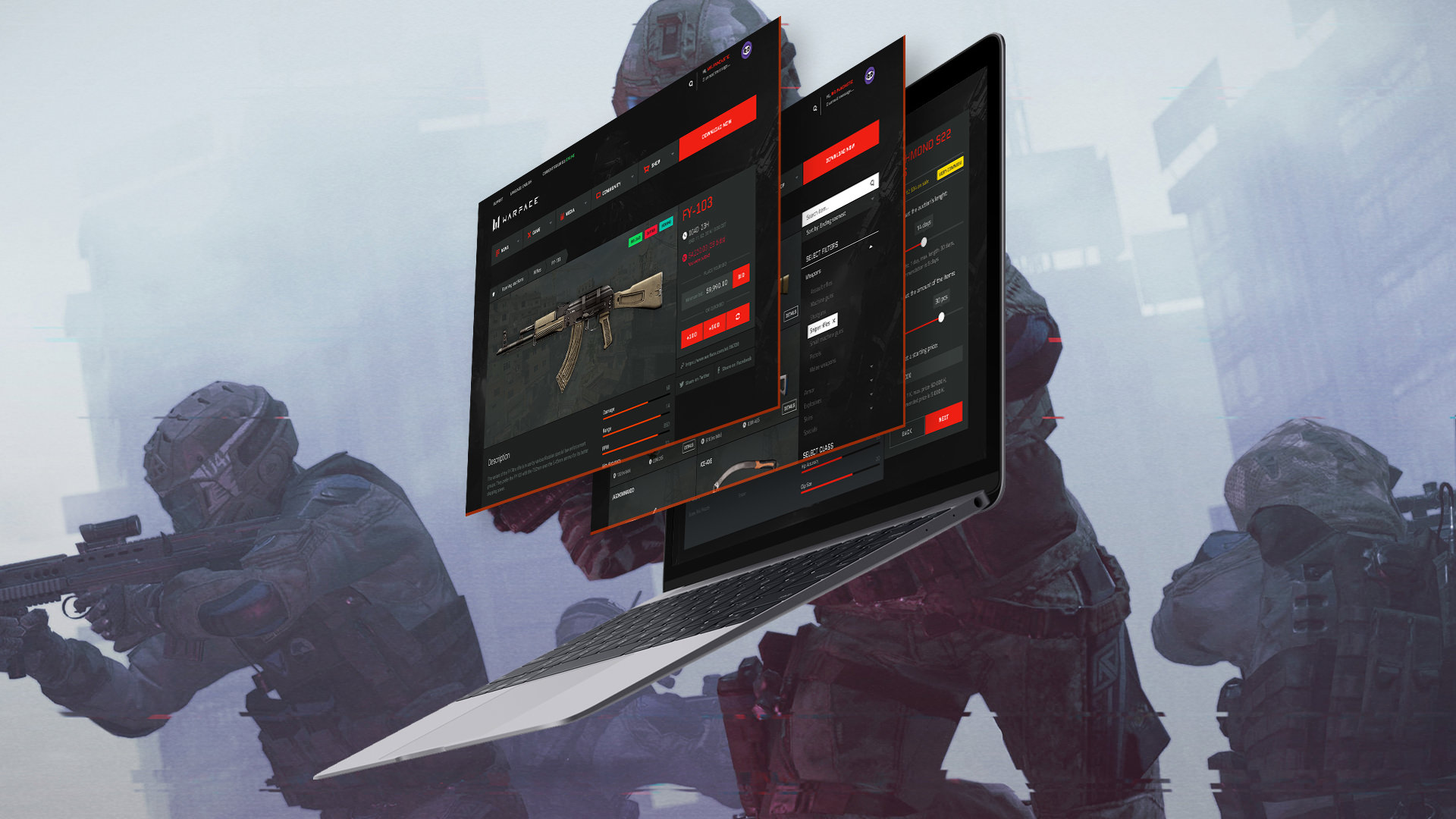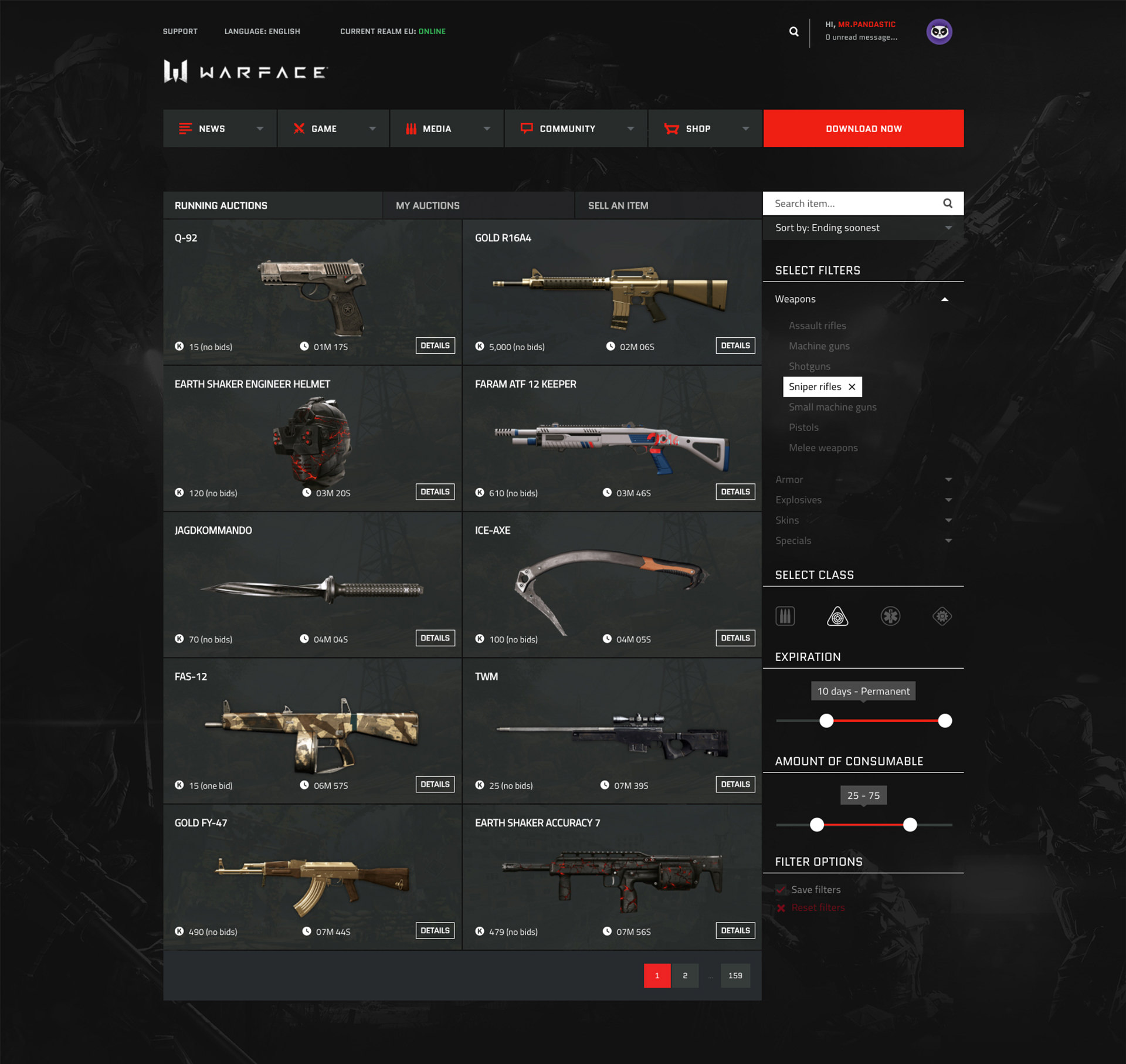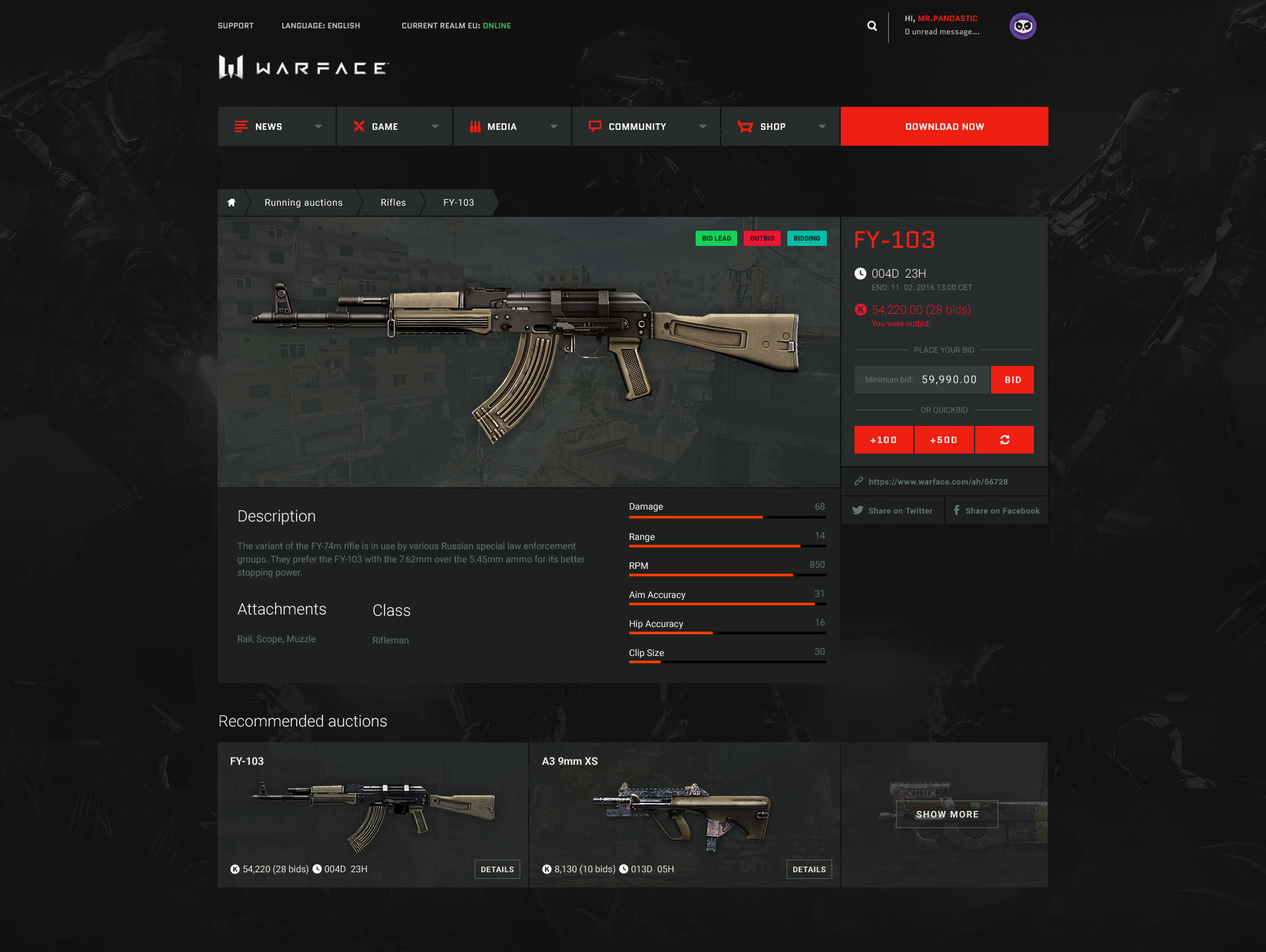The Warface Auction House - 2016

What is Warface?
Warface is an online multiplayer, cooperative and competitive first-person shooter from the legendary studio Crytek.
The game is free to play and uses micro-transactions to monetize. There are two types of currencies, one is collectable for in-game activity, the other one can be purchased for real money (USD/EUR). The credits can be used to buy loot boxes (slot machine) or restock consumables.
The Frustration
As the other free to play games, the income generated from selling cosmetic items to the players, to keep the power balance in the game, and the matches justified.
These cosmetic items (skins) can be obtained from the loot boxes or as a reward for challenges.
The frustration starts when you have opened a thousand boxes and still don’t have that particular item you are eager to use, but all of your foes running around with it. There is no way to trade weapons or skins, you can try again. And again…
The player can feel this is a waste of money because beyond virtual credits you need luck as well. This frustration can lead to abandoning the game or stop purchasing virtual currency for the loot boxes.
The Risk
Just let the player trade items. Easy.
Yes, we had the same thoughts. Opening trading brings a lot of risks to the table, which can even destroy the community.
One is fraud and stolen accounts. Fortunately, the number of hacked accounts, in general, are low, mostly used for trolling. But when you can actually “take” the items, it’s more desirable to get into someone else’s account.
The second is connected to the first problem. Because the majority of the loot box purchases are made with the credits that been purchased with hard currency, there is real money on stake.
Beyond the issues above, we had to consider the possible drop in box purchase and the death of excitement if we let the players just get what they want with a simple purchase.
The Solution
Auctions are a long-existing form of trade that provides enough excitement, and because of the time factor can be more secure than simple 1 on 1 trading.
For this to work, we needed to specify rules like bidding time options or available items.
Due to financial and manpower limits, the decision was to not put the auction house into the game. The web HUB team was more agile and flexible in this matter, and this way, we were able to increase the time players spend with the game; meanwhile, they are outside of the game.
The HUB was already the centre of the community with news and forum; the perfect place for the auctions. And an essential part of the process already takes place in the HUB: the virtual credit purchase.
Research
To be able to bring great ideas to the table, I’ve spent some time exploring and analyze other game and non-game auction and trading platforms.
Went through the World of Warcraft, Counter-Strike, Diablo trading platforms and obviously made my notes on eBay as well.
Meanwhile started to involve few players from the community to do “user interviews” about the upcoming feature. This handful of community members became my “beta tester group” later.
The Design
Started with the possible variations of flow of the two options: selling and buying.
The high fidelity wireframes followed the flow, and the conversation was started with teammates and the players.

We already know the development going to be in multiple iterations, we cannot have all the features live in the first release.
The reason was simple: for this type of operation, we had to work together with the game servers as well. We needed to tap into the stash of each user, alongside the metadata of each item. The Hub front-end was requesting the data from the Hub back-end witch fetched a catalogue every 5-10 minutes from the game servers all across the world.
I had to plan the features according to have the most comfortable experience for the player with the limited development resources. To help this plan to succeed, we decided to go with a soft launch. First, a closed beta internally with the mentioned “beta group”, then a 1-2 weeks long “not announced” public run followed.
From the visual point of view, we already had a design system for the HUB, so I had to implement the new features based on it and extend the system if needed.

Created the mockups for each step and handed it over the front-end devs to apply it to the functioning interfaces they built based on the wireframes.
Really wanted to keep the interface clean and easy to use. Few key features from the functions:
- Autocomplete search to be able to find the “sometimes confusingly named” special edition items
- Filter to class, to be able to narrow down to class-specific items. For example, shotguns for the medics.
- Breadcrumb navigation
- Quick and automatic bidding to create excitement for the last minutes
- Recommended other items to balance the demand and supply
- Display rarity and recommended price on the “sell” interface to help players define a fair and realistic price
- Notifications with quick bid and instant credit purchase if wallet balance is low, to have an excellent monetization opportunity

Results
With the soft launch, we were able to balance the IT system and finetune the interfaces based on the feedback.
The Auction House became a huge success in the Warface Community. The credit sales were increased with 30%+ and became a widely used feature.
It became a useful tool for the marketing team to create “Auction Exclusive” items and have control above these rarities.
The market was continuously monitored and had a rotation in the list of available items to sell, so none of the items could flood the market.
The Takeaway
Had to learn to have compromises and plan for multiple iterations, learn to prioritize and aim to quick wins.
Actively involving the community is priceless, work with them like teammates really helped to push this project to be a great addition to the game.